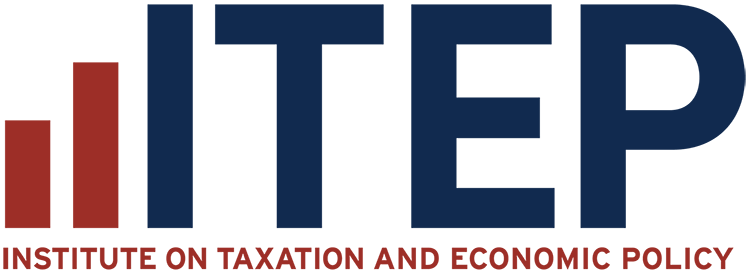
Recent Work by ITEP
What’s the Matter with Kansas Is What Ails All 50 States
September 18, 2014 • By Jenice Robinson
It’s easy to hold up Kansas as the poster child for regressive tax policies gone awry. By now it’s apparent Gov. Sam Brownback and his allies in the state legislature were wrong when they predicted lopsided tax cuts would boost the state’s economy. The state will have trouble funding priorities such as education and services […]
Read the Report in PDF Form The Census Bureau released data in September showing that the share of Americans living in poverty remains high. In 2013, the national poverty rate was 14.5 percent, a slight drop from last years’ rate of 15 percent and the first decline since 2006.1 However, the poverty rate remains 2.0 […]
The top 20 percent of households captured more of the nation’s collective income (51 percent) than the rest of population, according to the Census report Income and Poverty in the United States: 2013 released today. This is consistent with what we know about worsening income inequality in this nation. Median household income remained relatively stagnant […]
Sales Tax Holidays: An Ineffective Alternative to Real Sales Tax Reform
August 5, 2014 • By Meg Wiehe
Sales taxes are an important revenue source, comprising close to half of all state revenues in 2013. But sales taxes are also inherently regressive because the lower a family's income, the more of its income the family must spend on things subject to the tax.
See the 2016 Updated Brief Here Read the Policy Brief in PDF Form Sales taxes are one of the most important revenue sources for state and local governments—and are also one of the most unfair taxes. In recent years, policymakers nationwide have struggled to find ways of making sales taxes more equitable while preserving this […]
For much of the last century, estate and inheritance taxes have played an important role in helping states to adequately fund public services in a way that improves the progressivity of state tax systems. While many of the taxes levied by state and local governments fall most heavily on low-income families, only the very wealthy pay estate and inheritance taxes. Recent changes in the federal estate tax, however, culminating in the "fiscal cliff " deal of early 2013, have forced states to reevaluate the structure of their estate and inheritance taxes. Unfortunately, the trend of late has tended toward weakening…
The gasoline tax is the single largest source of funding for transportation infrastructure in the United States, but the tax is on an unsustainable course. Sluggish gas tax revenue growth has put strain on transportation budgets at the federal and state levels, and has led to countless debates around the country about how best to pay for America's infrastructure.
STAMP is an Unsound Tool for Gauging the Economic Impact of Taxes
May 21, 2014 • By Carl Davis
The Beacon Hill Institute (BHI), a free-market think tank located at Suffolk University, frequently uses its State Tax Analysis Modeling Program (STAMP) to perform analyses purporting to show that lowering taxes, or not raising them, will benefit state economies. But STAMP suffers from a number of serious methodological problems and should not be relied upon by anybody seeking to understand the economic impacts of state tax policies.
An updated version of this brief was published on February 9, 2017. Read this report in pdf. Every state levies taxes on gasoline and diesel fuel, usually just called “gas taxes.” These taxes are an important source of state revenue—particularly for transportation—but their poor design has resulted in sluggish revenue growth that fails to […]
The federal gas tax is a critical source of funding for the nation's transportation system, but its design is fundamentally flawed. In recent years, the consequences of those flaws have become increasingly obvious, as the federal government has struggled to fund a 21st century transportation network with a gas tax that has predictably failed to keep pace with the nation's growing infrastructure needs. This ITEP Policy Brief explains how the federal gas tax works, its importance as a transportation revenue source, the problems confronting the gas tax, and the reforms that are needed to overcome these problems.
